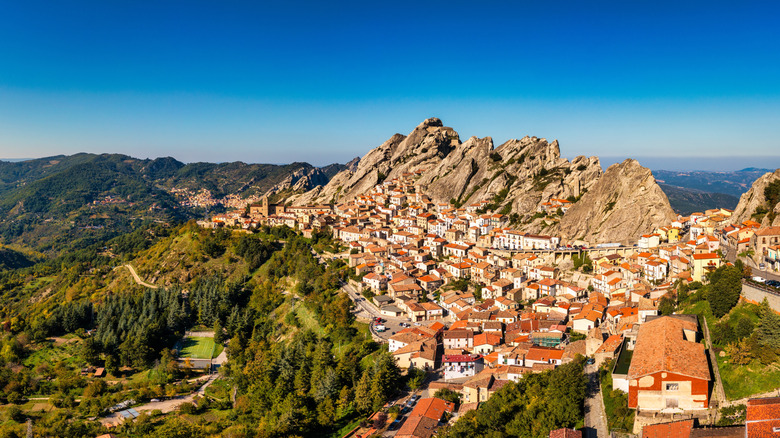While Italian itineraries often involve Rome (undoubtedly the best city to kick off your Italian vacation) or leisurely visits to any of its alluring islands, there exists a wealth of crowd-free, under-the-radar Italian towns that offer the authentic la dolce vita experience to those who stumble upon them. The southern Italian region of Basilicata, blessedly spared from the throngs that flock to Italy’s overrated tourist traps, showcases its collection of archaeological treasures, cultural offerings, and attractive hilltop villages. And one of its underrated gems is Pietrapertosa, a charming town located 3,346 feet above sea level, earning its title as Basilicata’s highest hilltop village and one of Italy’s most beautiful villages.
But Pietrapertosa’s charm extends beyond its fairytale-like mountainside location and stone buildings seemingly frozen in time amid breathtaking vistas of the Lucanian Dolomites. It also appeals to adventurers with its numerous activities in nature, which include challenging hikes and a thrilling zipline ride across the gorge to Castelmezzano, another must-visit hillside town in the region.
To get here by air, Bari Airport is closest to Pietrapertosa and a two-hour drive away by car. Taking public transportation can be challenging, as there are no direct buses into town. The commute will entail an hour-and-a-half bus ride from the airport to the city of Matera, followed by another hour-long bus that drops you at Bivio Campomaggiore, where you’ll need a taxi to cover the remaining 8 miles to Pietrapertosa. That said, renting a car conveniently saves you from being at the mercy of public transport schedules and delays.
Discovering Pietrapertosa on foot
Pietrapertosa, whose literal translation is “pierced stone,” perfectly encapsulates the village’s rock-carved architecture. With roots dating back to the 8th century B.C., Pietrapertosa’s architecture carries influences of the rulers that occupied it over the centuries, from the invasions of the Goths and Byzantines to the two-decade rule of the Arab-Saracens, followed by the arrival of the Normans, Swabians, and other ruling lords from the 9th century onwards. The village bears the mark of its medieval past. A district of rock-carved alleyways, steep stairways, and tunnels, named Arabata by the Saracens, is one of Pietrapertosa’s most defining features. Houses are built to follow the slope of the mountain, integrating the rock face into their homes as backing walls.
The winding streets will no doubt lead you to the 15th-century Madre di San Giacomo Church, where two frescoes by Giovanni Luce — the “Last Judgement” and the “Chronological Series” — can be admired. Make your way up to Castello Normanno-Svevo, which occupies the highest perch in the village. The panoramic views make the climb worth it. Aside from the views, amble across the castle ruins to explore its walls, the watchtower, dungeons, and cisterns. Mild, temperate weather graces Pietrapertosa in the spring and fall, making for pleasant walks around the town.



